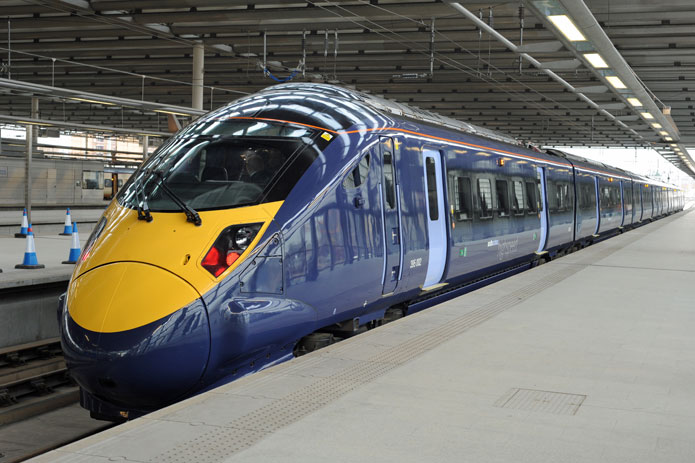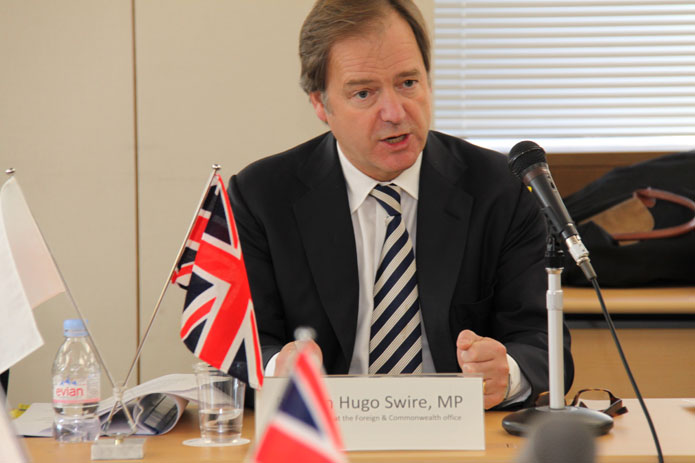How Britain missed the train on railway technology
• “High-speed trains are the future for Britain”
• UK lags behind in developing railways
• Govt budgets £37.5bn for railways by 2019
• Also looking at other countries’ systems
Scottish-born entrepreneur Thomas Glover brought the first steam train to Japan in 1868, demonstrating the Iron Duke on a 13km track in Nagasaki. According to reports from the time, locals who saw the demonstration were in awe of British technology.
Nearly 150 years later, the UK is looking to Japanese firms to provide cutting-edge railway technology. Simon Burns, the minister of state for transport, paid Japan a four-day visit in mid-February to experience the advances that have been made here in the intervening years.
“I’ve been very impressed”, Burns said after enjoying a 40-minute journey in the driver’s compartment of a bullet train heading north from Tokyo Station.
“Reliability and punctuality here are just fantastic”, said Burns, who was appointed minister in September 2012. “The safety record is phenomenal, with both railway firms I have spoken to so far not having any fatalities since the companies were privatised in 1987.
“[The firms] have also embraced new technology in ticketing systems to help eliminate queues when buying tickets.
“We can also see significant regeneration in areas where tracks have gone and where stations have been built, including in the hinterland beyond these stations”, he said.
The minister was accompanied on his visit by Martin Capstick, responsible for the government’s high-speed rail policy since January 2011, and Andrew McNaughton, honorary professor of railway engineering at Nottingham University and an authority on the sector since 1973.
“High-speed trains are without a doubt the future for Britain”, Burns said. “We already have the Channel Tunnel route which has proven to be a revolution in connectivity across the continent, at the same time as freeing up capacity on conventional lines and for freight.
“This could be a critical engine for growth that will help to revolutionise the country”.
Burns also lamented the fact that the UK has slipped far behind other nations in railway technology.
“We have a history of being at the sharp end of railway technology. You only had to look at the opening ceremony for the London 2012 Olympic and Paralympic Games, which highlighted the time when we were in the lead; the industrial revolution, the development of Britain, and the impact that had on the rest of the world.
“We are playing catch-up from successive governments in the past”, he said. “If governments got into trouble and needed to save some money, they chose to starve railways of investment. But we are now determined to have a world-class railway system.
“We now have an opportunity to get back to the forefront of railway technology and this is the time for us to grasp that nettle”.
The UK government is examining the high-speed rail links that have already been put into operation in Spain, Germany and France, as well as Japan. Burns has revealed that the UK plans to select the most appropriate elements from each country to ensure the system that is put in place in the UK is the “very best”.
Burns added that there is broad support across the political spectrum for the UK’s railway initiative, giving the project much-needed “stability”.
“The [UK] prime minister has made it plain time and time again that this is our future, for internal transport that will then flow through the Channel Tunnel into Europe”, he said. “To know that the government is consistent on this means that it will happen”.
Investment in the British railway sector in the five years from 2014 has been set at £37.5bn—the greatest investment in the UK rail system since Victorian times. It will also create an estimated 100,000 jobs in building new lines and stations.
Phase one of the construction is for a high-speed rail “spine” from London to Birmingham that is scheduled for completion by 2026 and will be the first new line for 100 years to be built north of London. Phase two would extend those tracks to Manchester and Leeds by 2033, where there is also the possibility of a third stage that would take the network to Scotland.
“We will see a spine to start with and spurs that can come off it if there is the need, perhaps to the south-west or Wales. But let’s get the spine there first”, he added.
Measures to improve the network have already been taken, Burns said, such as the electrification of 1,287km of track, including on the Southampton to Oxford line that extends to South Yorkshire.
“These are exciting times for the railways, but it will take some more time to come to fruition”, he said. “This is not something that can be done overnight. We are replacing antiquated overhead lines and signalling boxes and people have already begun to see the benefits.
“You don’t get it on the cheap, but it’s worth the investment because of the knock-on effects on the economy and the improvements in passengers’ journeys”.
As well as meeting with senior officials of Japan Railways firms, Burns met executives of Hitachi, Ltd., which is investing in engineering facilities in County Durham and creating 730 jobs, plus 200 temporary construction jobs.
In the same way that Nissan Motor Co., Ltd. has been successful in exporting vehicles from its Sunderland plant, there are hopes that Hitachi’s railway equipment and technology will, in future, be exported from the north-east of England to clients across Europe.






